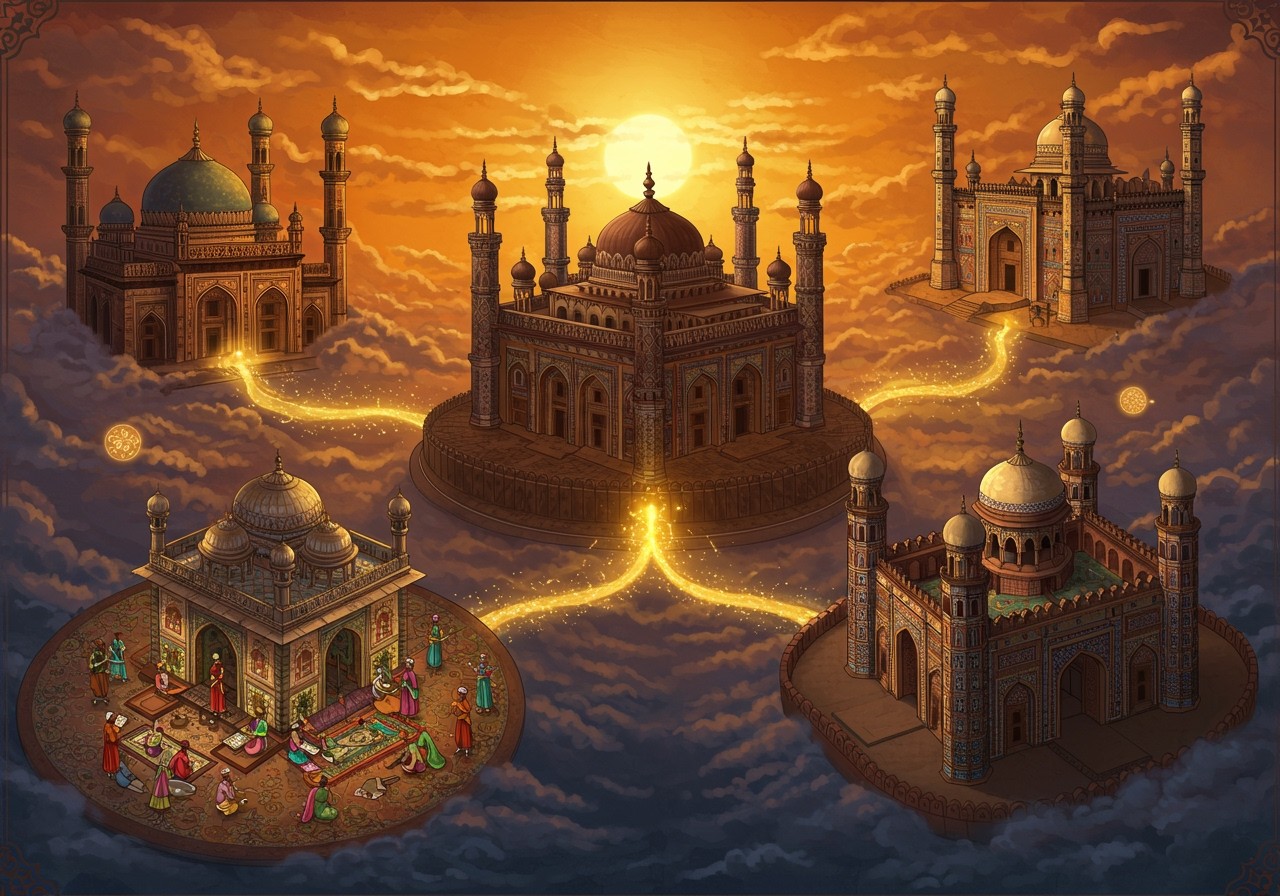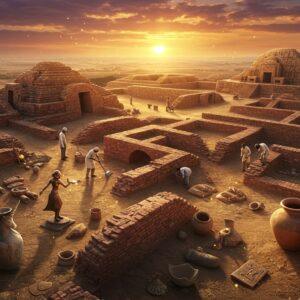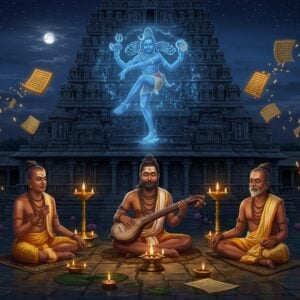
Embark on a captivating exploration of the Five Deccan Sultanates, a pivotal chapter in India’s rich history. Delve into the rise and evolution of these powerful kingdoms that shaped the Deccan Plateau’s cultural and political landscape. Uncover the intricate tapestry of traditions, art, and architecture they bequeathed, leaving an enduring legacy on modern India. This journey promises to be both enlightening and enriching, connecting you with the vibrant heritage of the Deccan region.
The Rise of the Deccan Sultanates: A Historical Overview
The Five Deccan Sultanates emerged from the decline of the Bahmani Sultanate, a once-powerful kingdom that held sway over the Deccan Plateau. As the Bahmani Sultanate fragmented, five distinct sultanates arose: Bijapur, Golconda, Ahmadnagar, Bidar, and Berar. This period, spanning the late medieval to early modern era, witnessed the fusion of Persian culture and Islamic influences, profoundly shaping the socio-political dynamics of the region. The Deccan Plateau, with its strategic importance for trade and military campaigns, became the coveted prize for these emerging powers.
The Five Deccan Sultanates: Individual Stories, Collective Legacy
Ahmadnagar: A Cradle of Culture
In 1490, Malik Ahmad Shah Bahri of the Nizam Shahi dynasty established the Ahmadnagar Sultanate. This kingdom quickly became a vibrant center of culture and learning, fostering the arts and championing the Dakhani language, a unique blend of local dialects and Persian influences. The legacy of Ahmadnagar lives on in its contribution to the region’s cultural richness.
Berar: A Hub of Trade and Exchange
Founded by Fethullah Imad-ul-Mulk of the Imad Shahi dynasty, Berar also declared its independence in 1490. Its strategic location facilitated trade routes and cultural exchanges, leaving a significant mark on regional politics despite its relatively short period of independence.
Bidar: A Tapestry of Traditions
Bidar emerged as a distinct sultanate in 1528 under the leadership of Qasim Barid I of the Barid Shahi dynasty. Positioned on the Deccan Plateau, Bidar served as a melting pot of traditions and ideas. Its rulers, known for their patronage of art and architecture, left behind a legacy of magnificent structures and intricate designs that stand as testaments to their vision.
Bijapur: Architectural Marvels
Founded in 1490 by Yusuf Adil Shah of the Adil Shahi dynasty, Bijapur flourished as a center of architectural splendor. The iconic Gol Gumbaz and other architectural marvels showcase the unique Indo-Islamic style that characterized the Adil Shahi period. These monuments continue to inspire awe and wonder, showcasing the grandeur of the era.
Golconda: Diamonds and Dynamism
The Golconda Sultanate rose to prominence in 1518 under the Qutb Shahi dynasty. Renowned for its thriving diamond trade, Golconda enjoyed immense wealth and prosperity. The magnificent Golconda Fort stands as an enduring symbol of the sultanate’s architectural and engineering prowess.
Interwoven Histories: Alliances, Rivalries, and Economic Prosperity
The Deccan Sultanates were not merely isolated entities; their histories were intertwined through alliances, rivalries, and shared economic interests. They often clashed with each other but also formed strategic alliances against common adversaries, most notably the Vijayanagara Empire. Their united front led to the decisive Battle of Talikota in 1565, which significantly weakened the Vijayanagara Empire and reshaped the political landscape of South India. These sultanates also played a vital role in the economic prosperity of the region. The Deccan Plateau became a bustling hub for trade, attracting merchants from far and wide. Market towns thrived, while agriculture and commerce further fueled the economic engine of the sultanates.
The Mughal Conquest and Enduring Legacy
Despite their impressive achievements, the Deccan Sultanates eventually succumbed to the expanding Mughal Empire. By 1687, Aurangzeb’s relentless campaigns brought the region under Mughal control, marking the end of an era. However, the cultural legacy of the Deccan Sultanates continues to resonate strongly in modern India. Their influences can be seen in art, language, architecture, and music, enriching the cultural tapestry of the nation.
Poojn.in: Connecting You with India’s Rich Cultural Heritage
As you delve deeper into the fascinating history of the Deccan Sultanates, Poojn.in offers a unique opportunity to connect with India’s rich spiritual heritage. We provide a wide selection of authentic puja items, sourced with utmost care and reverence, to help you maintain your spiritual practices. Whether you’re seeking traditional items for home worship or exploring the rich traditions of the Deccan region, Poojn.in is your trusted partner.
Explore our curated collection, which includes:
- Traditional Puja Items: Discover a wide range of puja essentials used in temples across the Deccan region, bringing the sanctity of these sacred spaces into your home.
- Authentic Brass and Copper Items: Adorn your puja space with beautifully crafted brass and copper items that reflect the artistic heritage of South India, adding a touch of tradition and elegance to your rituals.
- Sacred Items for Home Temples: Create a serene and sacred atmosphere in your home temple with our collection of deities, including Lord Vishnu, Lord Shiva, and Lord Brahma, crafted with devotion and attention to detail. Explore our decorative items here.
- Prayer Accessories: Enhance your prayer experience with our selection of prayer accessories commonly used in Maharashtra, Karnataka, and Telangana temples, connecting you to the unique spiritual traditions of these regions.
At Poojn.in, we strive to make your spiritual journey seamless and convenient. We offer:
- Pan-India Delivery: No matter where you are in India, we deliver your chosen items right to your doorstep, ensuring that you have access to the puja essentials you need.
- Expert Guidance: Our knowledgeable team is available to assist you in selecting the right items through phone consultations at 03369029784, WhatsApp support at 9476142738, and detailed product descriptions that explain the religious significance of each item.
- Quality Assurance: We ensure the authenticity and quality of all our ritual items, so you can perform your puja with complete peace of mind.
Visit www.poojn.in to browse our complete collection and experience the convenience of online shopping for authentic puja items. We’re committed to providing you with genuine products that uphold traditional standards while offering the convenience of modern-day shopping.
Featured Products to Enhance Your Spiritual Practice:
- Brass Puja Thali Sets: Elevate your puja rituals with beautifully crafted brass thalis, adding a touch of traditional elegance to your sacred space.
- Traditional Oil Lamps (Diyas): Illuminate your home and heart with the warm glow of traditional diyas, symbolizing purity and auspiciousness.
- Copper Water Vessels: Use these sacred vessels for offering water to deities, adding a traditional touch to your daily rituals.
- Sacred Thread (Janeu): Find high-quality Janeu, representing spiritual commitment and purity.
- Incense Holders: Choose from a variety of incense holders to create a calming and fragrant atmosphere during your puja.
- Bell (Ghanta): Enhance the spiritual resonance of your puja with a beautifully crafted bell, symbolizing the invocation of divinity.
All items are carefully packaged to maintain their sanctity during delivery, ensuring that they reach you in pristine condition. We value the sacred nature of these items and take utmost care in handling and delivering them to you.
Reflecting on the Deccan Sultanates: A Legacy of Resilience and Innovation
The Deccan Sultanates represent a remarkable era of creativity, resilience, and innovation amidst political complexities. Each sultanate contributed uniquely to the rich tapestry of the Deccan Plateau’s history. From Ahmadnagar’s cultural blossoming to Golconda’s flourishing diamond trade, their stories are integral to India’s heritage. Though their rule ended, their influence continues to inspire. Their architectural marvels, linguistic contributions, and strategic innovations offer a glimpse into a time of great creativity and collaboration. By understanding their legacy, we gain a deeper appreciation for the cultural richness and diversity that defines India today. Learn more about significant temples and rituals in Maharashtra and explore the Kopineshwar Mandir’s history to further immerse yourself in the region’s rich cultural tapestry.
Frequently Asked Questions about the Five Deccan Sultanates
What distinguished the Five Deccan Sultanates? The Five Deccan Sultanates—Bijapur, Golconda, Ahmadnagar, Bidar, and Berar—were kingdoms located in South India, renowned for their rich culture, unique architectural styles, and contributions to art and literature. Their influence on the region’s historical narrative is undeniable.
What were the hallmarks of the Five Deccan Sultanates? These sultanates were celebrated for their vibrant cultural landscape, distinctive architecture, and contributions to artistic expression. They served as patrons of the arts, fostering a period of creativity and cultural exchange.
How did the Five Deccan Sultanates come into existence? The Five Deccan Sultanates emerged following the disintegration of the Bahmani Sultanate in the latter half of the 15th century. This fragmentation led to the rise of these independent kingdoms, each with its own unique trajectory.
What is the historical significance of the Five Deccan Sultanates? These sultanates played a pivotal role in the history of medieval India, influencing the dynamics of trade, cultural exchange, and the development of artistic traditions. Their impact on the region’s overall development is undeniable.
How did the Five Deccan Sultanates interact with one another? The relationships between the sultanates were often complex. They sometimes engaged in competition and conflict, but also forged alliances against common enemies. This intricate interplay shaped the political landscape of the region. For a deeper understanding of the origins of Hinduism, a prominent religion in the region, explore our articles: Hinduism: A Complete History and Origin and Hinduism: A Concise History and Exploration of its Origins.
What languages were spoken in the Five Deccan Sultanates? Persian served as the official court language, while local languages like Marathi, Kannada, and Telugu were also commonly spoken. This linguistic diversity reflected the multicultural nature of the region.
Can you name some notable architectural achievements of the Five Deccan Sultanates? Architectural marvels such as the Gol Gumbaz in Bijapur and the Charminar in Golconda stand as testaments to the architectural ingenuity of the era, showcasing the distinct Indo-Islamic style that flourished under their rule.


